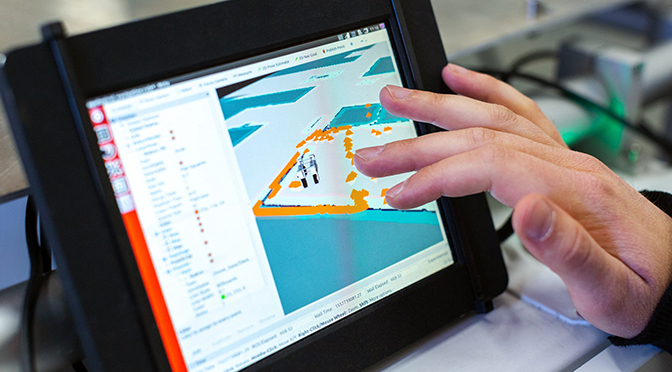Riding The Cloud – The Future Of Transportation Management System
Get In Touch
Your information is protected by our Privacy Policy and Terms of Use.
Our Offices
E 237, First Floor, Phase VIII B Sector-74,
Industrial Area, Mohali-160071, Punjab
Phone: +(91) 93010-10197
6470 East Johns Crossing, Suite 160
Johns Creek, GA 30097
Phone: +1(470)-268-9868
531A, Upper Cross Street, #04-95,
Hong Lim Complex, Singapore - 051531
Phone: +1(470)-268-9868
- Solutions For
- Solutions
- Services & Expertise
- Case Studies
- Insights
-
Get In Touch
Get In Touch
Your information is protected by our Privacy Policy and Terms of Use.
Our Offices
Zapbuild Technologies Private LimitedIndia
E 237, First Floor, Phase VIII B Sector-74,
Industrial Area, Mohali-160071, Punjab
Phone: +(91) 93010-10197Zapbuild Technologies (US) LLC United States
United States
6470 East Johns Crossing, Suite 160
Johns Creek, GA 30097
Phone: +1(470)-268-9868Zapbuild Technologies (S) PTE LTDSingapore
531A, Upper Cross Street, #04-95,
Hong Lim Complex, Singapore - 051531
Phone: +1(470)-268-9868
- Learning Management System
- Command and Control Center
- Transportation Management
- Warehouse Management
- Fleet Management
- Supply Chain Management
- Document Contracts Management
- Load Board Platform
- Route Optimization
- Electronic Proof Of Delivery
- Freight Exchange Platforms
- Customer Relationship Management
- Data Analytics and Business Intelligence
- Logistics Aggregator
- Crowdshipping Marketplaces
- Reverse Logistics Marketplace
Real-Time Tracking: Revolutionizing Location Systems in Logistics

Efficiently managing assets and inventory is of utmost importance for businesses, particularly in the logistics field.
In today’s fast-paced world, the ability to track inventory in real time has become even more crucial. Real-Time Locating Systems (RTLS) offer a solution by providing accurate location information and improving operational efficiency.
Some industries have adopted tracking systems for a competitive edge, but some businesses are unaware of the need for real-time asset tracking and monitoring. This article aims to share insights on the importance of locating systems in transportation operations management, as well as explore the future possibilities and numerous advantages they bring.
Understanding Real-Time Tracking
Real-time tracking utilizes GPS technology and logistical databases to track real-time shipments. The timely delivery of products plays a vital role in a company’s overall performance, making it essential to ensure on-time deliveries. Real-time tracking eliminates logistical challenges and provides detailed information about the location, progress, and status of deliveries, enabling effective asset and inventory management.
How RTLS Works
Real-Time Locating Systems employ hardware and software to pinpoint the location of people or objects. By utilizing active Radio-frequency identification (RFID) tags and a network of radio signals, RTLS systems can accurately track and locate equipment. This location data empowers logistics businesses to make informed decisions and optimize their operations effectively.
Types of Real-Time Locating Systems
There are various types of RTLS systems available:
Radio Frequency Technologies: These systems use radio signals to determine location, often leveraging existing infrastructure to minimize setup costs.
Satellite Navigation and Positioning Technologies: GPS is a commonly used satellite technique that guarantees positioning accuracy by analyzing satellite signal intervals.
Local Positioning Technologies: Local systems employ ultrasound and infrared sensors to identify moving objects. Infrared devices detect IR impulses emitted by receivers with specific coordinates.
RFID: RFID technology is primarily used for object identification, allowing for various applications such as access control, barcode recognition, and personnel identification.
Bluetooth: Real-Time Location tracking systems can leverage the Bluetooth Low Energy standard for efficient tracking.
Examples of RTLS Applications
RTLS systems have versatile applications, including:
Tracking Assets Inside Buildings: RTLS enables real-time tracking of assets within buildings by attaching tags to vehicles, machinery, or warehouse commodities. Interactive maps provide detailed asset movement information, allowing users to track specific objects, analyze traffic, and improve logistics processes.
Indoor Navigation and Positioning: RTLS positioning opens up numerous possibilities for efficient indoor navigation. Users can plan itineraries, browse digital maps with points of interest, and easily locate objects within buildings.
Workplace Safety: RTLS enhances workplace safety by enabling controlled access to restricted areas in hazardous environments. Workers can be granted access to specific factory areas, improving overall safety protocols.
Benefits of RTLS for Logistics Businesses
Real-time locating systems, combining technologies like GPS, RFID, Wi-Fi, and sensors, offer several benefits for logistics businesses:
Real-Time Tracking and Monitoring: The ability to access precise location data in real-time allows businesses to make informed decisions and swiftly address any issues or opportunities that arise.
Increased Productivity and Efficiency: RTLS streamlines processes, reduces costs, search times, minimizes theft, and expedites procedures by providing accurate asset location information. This optimization leads to efficient inventory management, optimized routing, and faster order fulfillment, resulting in cost savings and improved customer satisfaction.
Asset Optimization: By closely monitoring asset movement, RTLS helps businesses identify underutilized resources and take necessary actions to optimize their allocation.
Data-driven Insights: Real-time location systems generate vast amounts of data that can be analyzed to gain valuable insights. Identifying bottlenecks, inefficiencies, and patterns allows businesses to optimize their processes further.
Seamless Integration and Scalability: RTLS solutions can integrate with existing systems like enterprise resource planning (ERP) and warehouse management systems (WMS). Moreover, these solutions are highly scalable, accommodating businesses of all sizes and facilitating future expansion.
Deploying Real-Time Locating Systems
To deploy an RTLS successfully, businesses should consider the following steps:
Preparation: Determine the intended purpose, project scope, items to be tracked, desired accuracy, and update frequency of the system. This will guide the selection of the most suitable technology.
Cost Calculation: Calculate deployment costs, including hardware, installation, training, software licenses, infrastructure integration, and ongoing maintenance. Assess return on investment (ROI) and potential savings opportunities to determine the most profitable solution.
IT Issues Resolution: Identify the responsible party for equipment installation and management, ensuring proper implementation and operation of the system.
Integration: Integrate the RTLS technology seamlessly into the existing infrastructure of the business during deployment.
The Future of Locating Systems in Logistics
Locating systems hold immense promise for the future of logistics, transforming the way commodities are tracked and handled throughout the supply chain. Advanced technologies such as GPS, RFID, and IoT will enable logistics firms to make data-driven decisions, optimize operational performance, and enhance overall efficiency. Additionally, emerging technologies like blockchain will increase transparency and security, and reduce the risk of fraud or loss.
With unprecedented levels of visibility, control, and dependability, locating systems will revolutionize the market and empower businesses to deliver items faster, more efficiently, and with greater precision.
Consider Real-Time Tracking Technology for Your Business
Real-time tracking technology offers numerous advantages, including streamlined delivery routes, reduced unsuccessful delivery attempts, and automated processes, resulting in cost reductions, increased revenue, and a competitive edge.
As technology evolves, the real-time transportation management system continues to evolve, enabling businesses to make timely decisions and stay ahead of the competition in an increasingly dynamic and competitive market.
At Zapbuild, we offer customized RTLS solutions addressing indoor and outdoor asset-tracking challenges of various Transportation and Logistics businesses. Our solutions streamline processes, mitigate risks, and enhance customer satisfaction. Contact us today to learn how we can build a tailored solution for your specific needs, and how it can benefit your business.

Looking to build future-ready technology solutions for your transportation or logistics business? Connect with our experts for a free consultation today connect@zapbuild.com
Categories
Trending


What is a Fleet Management System?

5 Ways AI is Revolutionizing Supply Chain Management
Subscribe to our newsletter
Related Insights

Logistics
Predictive Intelligence for Optimized Logistics: From Reactive to Proactive Decision-Making

Logistics
5 Key Reasons You Should Invest in a Logistics Management System

Logistics
Logistics Management Software : Important Things You Should Know

Fleet
From Cost Center to Strategic Asset: Unlocking Profitability in Legacy Systems in Logistics
Connect with Our Experts
Take the first step toward the digital transformation of your Transportation and Logistics business.
Get a Free Consultation with Zapbuild’s technology experts today.